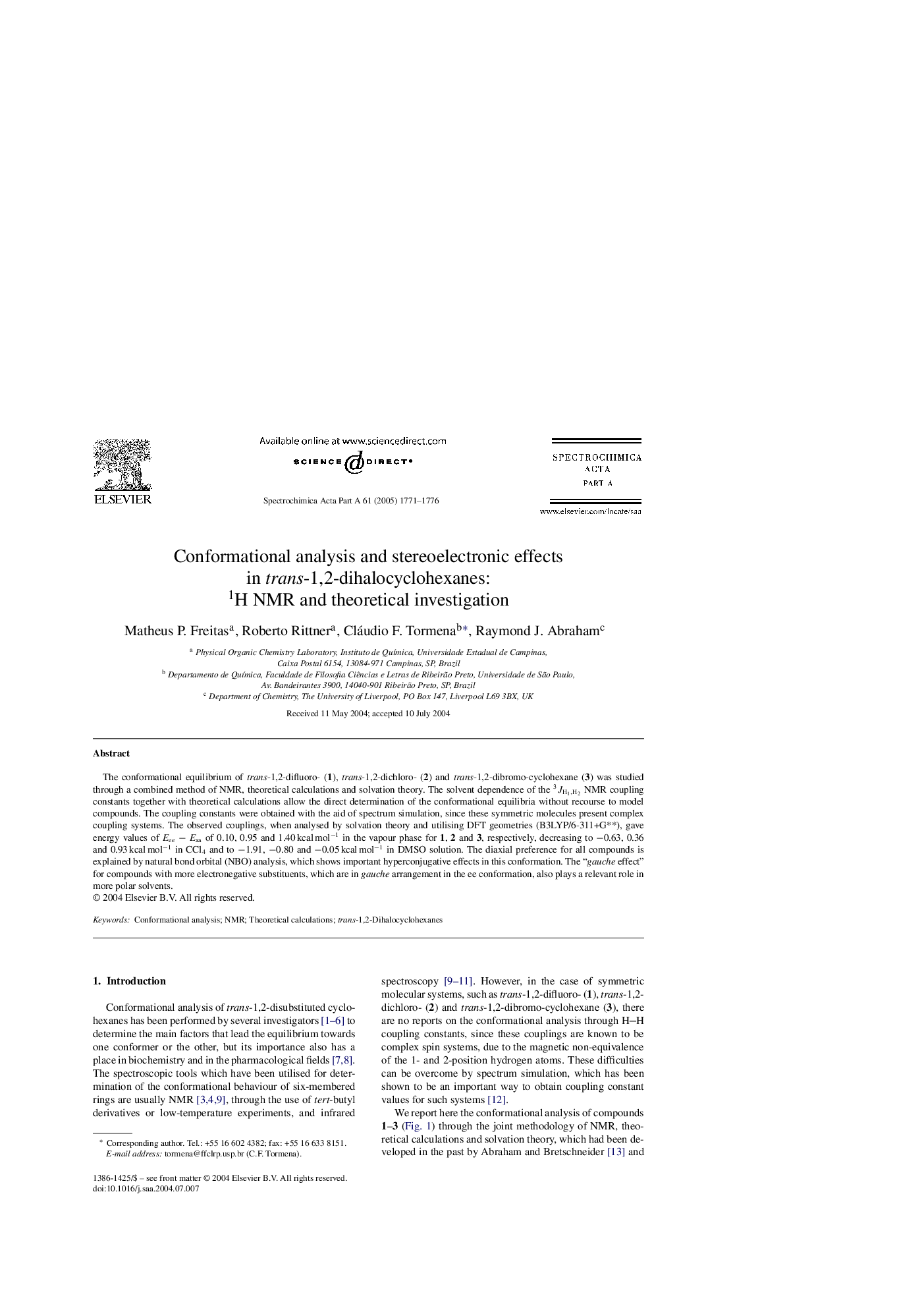| Article ID | Journal | Published Year | Pages | File Type |
|---|---|---|---|---|
| 10558197 | Spectrochimica Acta Part A: Molecular and Biomolecular Spectroscopy | 2005 | 6 Pages |
Abstract
The conformational equilibrium of trans-1,2-difluoro- (1), trans-1,2-dichloro- (2) and trans-1,2-dibromo-cyclohexane (3) was studied through a combined method of NMR, theoretical calculations and solvation theory. The solvent dependence of the JH1,H23 NMR coupling constants together with theoretical calculations allow the direct determination of the conformational equilibria without recourse to model compounds. The coupling constants were obtained with the aid of spectrum simulation, since these symmetric molecules present complex coupling systems. The observed couplings, when analysed by solvation theory and utilising DFT geometries (B3LYP/6-311+G**), gave energy values of Eee â Eaa of 0.10, 0.95 and 1.40 kcal molâ1 in the vapour phase for 1, 2 and 3, respectively, decreasing to â0.63, 0.36 and 0.93 kcal molâ1 in CCl4 and to â1.91, â0.80 and â0.05 kcal molâ1 in DMSO solution. The diaxial preference for all compounds is explained by natural bond orbital (NBO) analysis, which shows important hyperconjugative effects in this conformation. The “gauche effect” for compounds with more electronegative substituents, which are in gauche arrangement in the ee conformation, also plays a relevant role in more polar solvents.
Related Topics
Physical Sciences and Engineering
Chemistry
Analytical Chemistry
Authors
Matheus P. Freitas, Roberto Rittner, Cláudio F. Tormena, Raymond J. Abraham,
